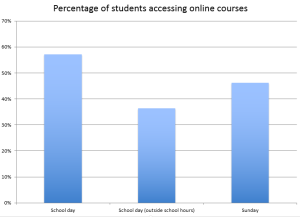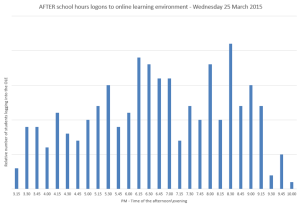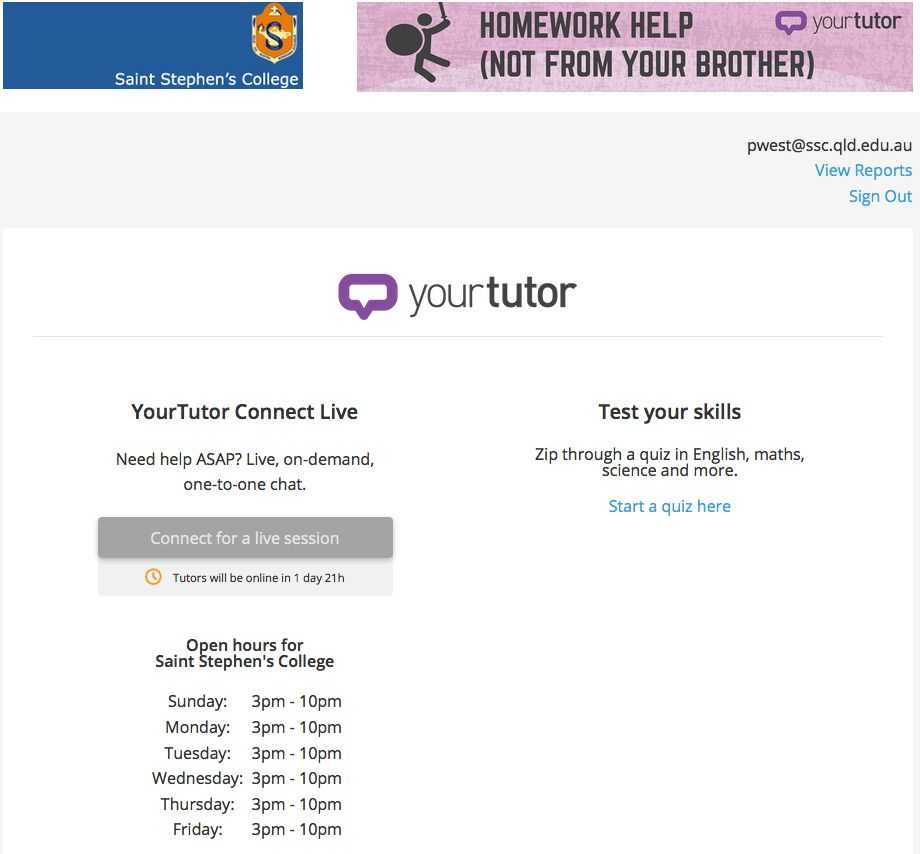Supporting off hours learning is a problem you might not even know you have
Recently, I began dubbing the current generation of students the “Netflix Generation.” They learn when they want, and expect learning resources to be available when and where they need them.
This is similar to the way they consume media through streaming services such as Netflix (for movies and television series) and Spotify (for music); they binge watch TV series multiple episodes in a row, and they expect a wide range of music to be available when and where they want. If they listen to a song in the car, they expect to be able to pick it back up in the house or while waking down the street. Increasingly, they expect learning resources to be available in the same fashion.
Smart educational organizations have built rich online courses filled with learning resources to support this type of learning. The old paradigm where learning occurs only in a classroom or lecture hall during school hours is gone. But in off hours, when teachers are at home, what will take their place?
Next page: Giving students study help off-hours
After a few years of building online courses with rich learning resources, my school now sees significant student use outside the traditional school hours.
Graph 1 (click for full size) – This graph shows the percentage of the Year 7 to 12 population that accessed the online learning environment. The graph showing the school day is an average figure derived from two weeks of data. The Sunday and outside school hours data is derived from recent individual days.
Anytime, anywhere teaching
However, this now produces other pressures. Learning outside of traditional school hours does not remove the need for teachers. If all that students needed in order to learn was information, schools would have closed once Google and high-speed broadband arrived on the scene. Students continue to need support, a human explanation, encouragement to work through a problem, and insight to take them through a mental barrier to get to the next stage of problem solving.
Yet if significant learning is happening outside traditional school hours, who is available to support it? Do we expect our teachers to be online and available at all hours of the day or night? Or do we expect our students to continue independently, even when they encounter difficulties? The ad hoc network of peers that some students have may not be able to provide the rapid, deep, expert insights that are needed.
Graph 2 (click for full size) – Student logons to the OLE after school. (Classes finish at 3.15pm). This is a snapshot of the number of students logging in to the system at a particular time. It is not the total number of students using the OLE at that time.
Next page: Benefits of online tutors
My organization has provided a solution to this problem. We have provided access to online tutors — accessible via a link in every course in our OLE (online learning environment).
This is an external service where students can get the support that they need; our teachers do not need to be available all night. There is no need to navigate to a separate web site, or to remember yet another user name and password. The external service has the student’s name, year level and the course they navigated from passed to them as part of the single sign on process (via LTI integration). It couldn’t be easier. (My school, which is in Australia, uses yourtutor, a local company that works with both secondary and higher education institutions. There are similar services for schools stateside, such as Tutor.com, although I personally cannot vouch for them).
The front page of the external support service showing the hours when it is available. This screen shot was taken on a Saturday afternoon; the service is open during the hours when many students study, rather than being available 24/7.
Usage of the system is consistent, has been growing in the past year, and has received good feedback from students.
Some comments from students include:
- “[xxxxx] was a great tutor and was very helpful. Described what he meant and made sure I understood.”
- “My tutor was very helpful and wasn’t hesitant to give examples.”
- “Patient with me and helped me find some information on what I was stuck with.”
The online tutors do not simply answer a question; they instead act as teachers to guide students to an answer. Students can now gain the help they need, when they need it, teachers can have the out-of-hours break that they need, and the school can be confident that they are supporting both their students and their staff.
- TC- What student choice and agency actually looks like - November 15, 2016
- What student choice and agency actually looks like - November 14, 2016
- App of the Week: Science sensor meets your smartphone - November 14, 2016






Comments are closed.